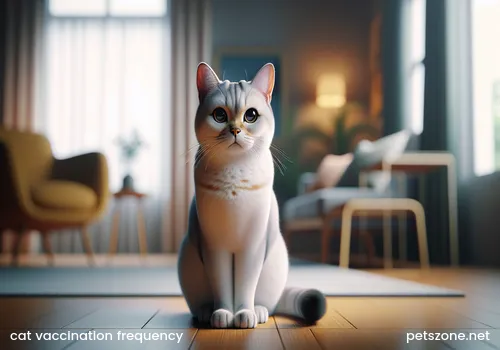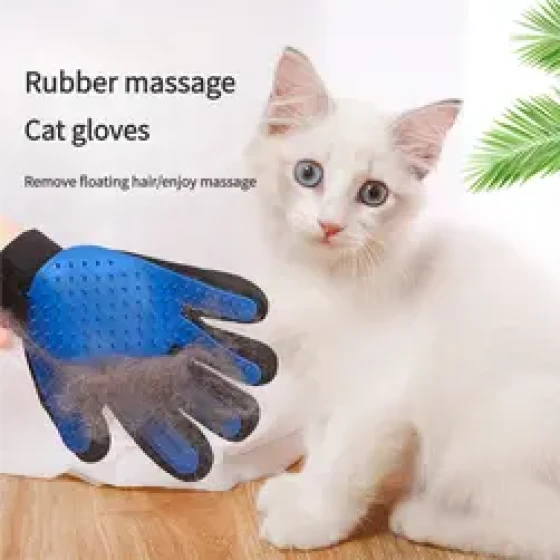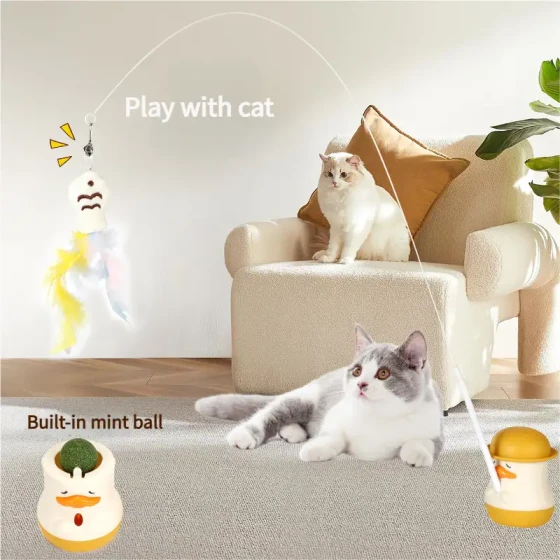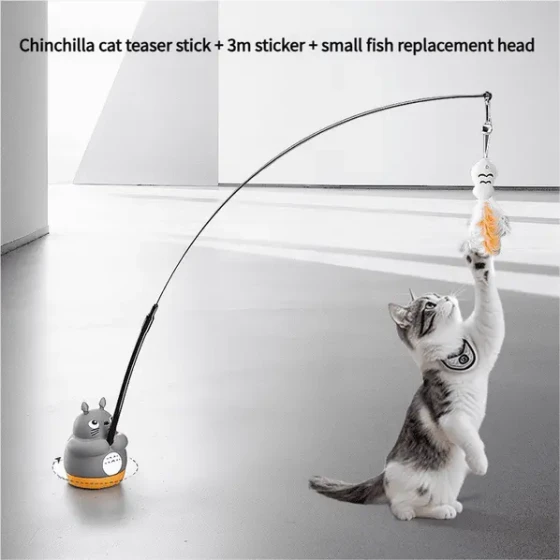How often should cats be vaccinated_important knowledge for cat owners
The question of how often cats should be vaccinated may seem like a simple matter of timing intervals, but it actually touches on the cornerstone of cat health management. It is far from a formulaic answer like "once a year" or "once every three years," and requires us to deeply understand the principles of vaccines, the life stages of cats, their living environment, and individual differences in order to make the most responsible and scientifically sound choices.
Simply put, this question involves the evolution of veterinary medical concepts and the depth of our understanding of "scientific pet care" as cat owners. If you are just looking for a simple timetable, it may be like asking "how often should people have a health check-up," where a standard answer overlooks many personalized needs. But since you clicked on this answer, you probably want to understand the logic and subtleties behind it more deeply.

Vaccines: The first line of defense for cat health, but not a one-size-fits-all "cure-all"
First, we need to clarify the role of vaccines: they introduce a weakened or inactivated form of pathogens (or their parts) to stimulate the cat's immune system to develop memory, so that when encountering the real pathogen in the future, the cat can respond quickly and eliminate it, preventing or mitigating illness.
This is like a "simulation drill" for cats, allowing their immune forces to recognize “enemies” in advance. But this drill must be carried out in stages and requires regular "review".
- The "startup" phase for kittens: series of vaccinations
This is the most critical period. Kittens receive maternal antibodies from mother's milk, which protect them from diseases early on but also interfere with vaccine effectiveness. As kittens grow and maternal antibody levels decline, a series of vaccinations is needed to build their own active immunity.- Usually starting at 6-8 weeks of age, administered every 3-4 weeks.
- This series typically requires 2-3 shots (depending on vaccine type and initial vaccination time).
- The last shot is usually completed at 16 weeks or older to ensure maternal antibodies no longer interfere with vaccine efficacy.
- Why multiple shots? Like installing computer system patches, the first shot is the basic installation, and subsequent boosters consolidate and perfect it to ensure the immune system develops sufficiently strong and lasting memory against pathogens.
- The "consolidation" phase for adult cats: booster immunization
After completing the kitten series, immunity is not permanent and requires periodic boosters.- First booster: About one year after finishing the kitten series, a booster shot is usually needed. This is considered a very important shot to truly consolidate long-term immunity.
- Subsequent boosters: This is the core issue and the most controversial part. According to current authoritative veterinary associations worldwide (such as AAHA/AAFP, WSAVA), core vaccines (feline panleukopenia, feline viral rhinotracheitis, feline calicivirus) for most healthy adult cats, after completing the kitten series and the one-year booster, can extend the vaccination interval to 3 years.
- Non-core vaccines (such as feline leukemia virus FeLV, rabies vaccine — the latter is mandatory in many countries or regions) may still be recommended to be administered annually, depending on the cat’s living environment, exposure risk, and local laws and regulations.
- Rabies vaccine: In many areas, this is not only for cat health but also a public health requirement, legally mandated to be given every year or every three years.
Therefore, regarding “how often should cats be vaccinated,” a relatively rigorous answer is: kittens need to complete a series of basic immunizations; adult cats require a booster at around one year old; thereafter, core vaccines are usually administered every 1-3 years, while non-core vaccines and rabies vaccines (if needed) may require annual vaccination. The specific plan must be customized by your veterinarian based on your cat’s age, health status, lifestyle (whether it goes outside, meets new cats, goes to boarding, etc.), and the local epidemiological situation.
Discussing a fixed vaccine cycle without considering individual differences and actual risks is like telling a group of people of differing ages and health statuses that "everyone must have exactly the same check-up every year." Clearly, this is not scientific.
Cat care is much more than just vaccination: overlooked essential matters
Vaccination is only one part of ensuring your cat’s health. A responsible cat owner needs to pay attention to much more. The following points are no less important than vaccines:
- High-quality "fuel": Diet and drinking water
Don’t expect healthy cats from cheap cat food. High-quality cat food provides balanced nutrition and supports bodily functions. More importantly, water! Cats naturally have a low desire for drinking water; long-term dehydration is a major cause of urinary diseases (such as cystitis, urinary stones). Provide multiple water bowls, try water fountains, ensure water is clean and fresh — these details are vital. As the old saying goes, illness starts from the mouth; eating and drinking are fundamental. - Silent threats: Internal and external parasite control
Fleas, ticks, ear mites, roundworms, tapeworms… These parasites not only make cats itchy and uncomfortable but also spread diseases and may affect human health. Even strictly indoor cats can catch parasite eggs or larvae brought home by their owners going outside.- Combined internal and external deworming: There are many integrated products on the market that handle both internal and external parasites.
- Regular: Most dewormers require monthly or quarterly use, with frequency depending on product type and the cat’s exposure risk. Always consult a vet to choose a safe, effective, and suitable deworming plan for your cat and strictly follow usage instructions.
- Life choices: Neutering
Neutering is not just about controlling reproduction, but also about cat health and behavior.- Health benefits: Neutering female cats greatly reduces the risk of mammary tumors and pyometra; neutering male cats reduces the risk of testicular tumors, prostate disease, and helps prevent injuries and infectious diseases (such as feline AIDS and leukemia) caused by fights.
- Behavior improvement: Neutering effectively reduces male spraying, female loud calling in heat, and attempts to run away, making cats calmer and improving harmony in the household.
- Best timing: Usually recommended before sexual maturity (about 5-6 months old), but the exact timing needs veterinary evaluation.
- "Litter box" philosophy: Cat litter boxes
A clean, appropriate, well-located litter box is important for the cat’s psychological health and good behavior.- Quantity: The basic rule is “number of cats plus one” litter boxes.
- Location: Choose a quiet, easily accessible place far from food and water bowls.
- Cleaning: Scoop feces and urine clumps at least once daily; thoroughly clean and change litter weekly or biweekly.
- Litter type: Observe your cat’s preference.
- Consequences: Litter box issues are a common cause of inappropriate elimination behavior, which is often the primary reason owners give up their cats. So don’t underestimate this “toilet” issue.
- Care from the inside out: Daily grooming
- Brushing: Especially important for long-haired cats to reduce hairball risk and is also a good opportunity to bond.
- Trimming nails: Regular nail trimming for indoor cats prevents furniture damage and avoids nails growing into paw pads causing pain or infection.
- Oral care: Cats also get tartar and periodontal disease which can seriously affect overall health. Brushing is best if possible, or use dental treats, water additives, and other aids. Ideally, have a professional dental cleaning annually.
- Eye and ear cleaning: Observe for abnormal discharge and clean when necessary.
- Building the mental world: Environmental enrichment
Though cats seem aloof, they need adequate mental stimulation. A monotonous indoor environment may cause boredom, anxiety, leading to destructive behavior, over grooming, or aggression.- Vertical space: Cat trees and wall shelves satisfy their climbing and high vantage point needs.
- Scratching posts: Provide scratching boards or posts of different materials and orientations (vertical, horizontal).
- Toys: Rotate toys regularly; provide interactive toys (wands) and solo play toys.
- Hiding spots: Cats like places where they feel safe; provide boxes, cat beds, etc.
- View: If safe, allow cats to watch outside through windows.
- Invisible protection: Annual check-ups
Even if cats appear healthy, annual veterinary exams are very important.- Early detection: Many diseases show no obvious symptoms early on; vets can find potential issues through palpation, auscultation, blood tests, etc.
- Weight management: Vets monitor weight; obesity or weight loss may signal health problems.
- Dental check: Vets assess oral health.
- Personalized advice: Vets provide professional recommendations on diet, behavior, vaccines, deworming, etc. based on individual conditions.
In summary, cat care is a systematic project, and vaccination is only one important part. Understanding the logic of vaccination and individual needs, combined with comprehensive daily care, environmental management, and regular veterinary check-ups, is the way to provide your cat with a healthy, happy, quality life. This requires not simple rote learning, but continuous learning, careful observation, and respect for life.





